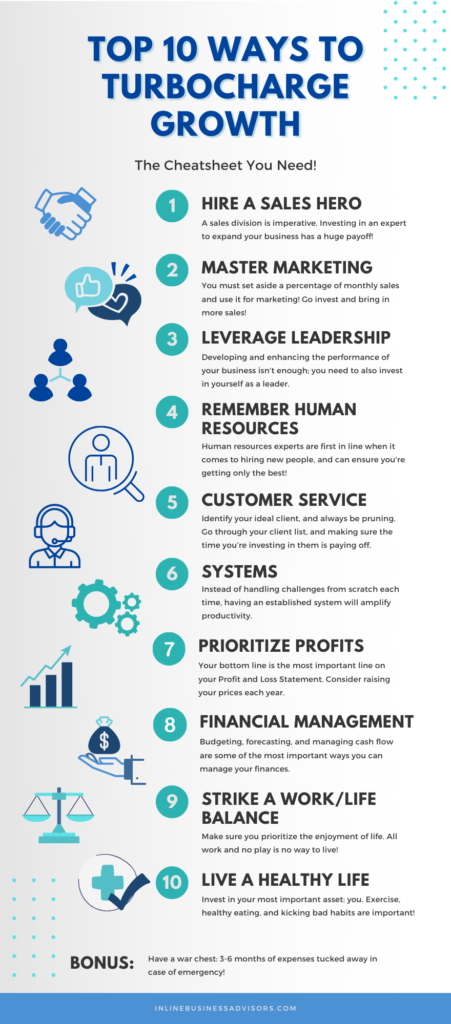Blog

Musings from the coach
Being an entrepreneur can be a lonely, stressful, and demanding job. This is especially true for small business owners trying to build themselves up. For many, the hustle is never-ending. Working 7 days a week with little to no rest, can seem like the only way to success. However, the hustle comes with a price. And for entrepreneurs without work-life balance, that price could be steep.
We all know how it goes. You begin with a slow start, and then you’re working nonstop to meet deadlines. After a while, it feels like you’re putting so much of yourself into the business that there’s nothing left for anything else in your life – family, friends, or personal health.
If this sounds familiar, this article is for you! We will discuss ways to create a healthy work-life balance. that leaves you feeling fulfilled while still hitting major goals. Read on to discover how to create boundaries between work and life, build healthier habits, and achieve balance to ensure you reach your goals while taking care of your mind, body, and soul.
What’s Work-life Balance for Entrepreneurs?
Many people use the term “work-life balance” to describe a happy and fulfilling work experience. For entrepreneurs, that typically refers primarily to finding enough time in one day for both your professional and personal life.
There are many different types of entrepreneurs, and they each have their own idea of what work-life balance means to them. Some will consider it a necessity, while others may see it as an added luxury or even unnecessary. No matter the case, there is one thing that all entrepreneurs must do if they want to succeed: be realistic about time management and understanding their needs.
The key reasons work-life balance can be so hard on entrepreneurs include stress, ambition, dedication, perfectionism, among others. The lack of financial stability, support from family members, and an overwhelming amount of tasks can also make it hard to strike a balance between professional and personal life.

Importance of Work-Life Balance for Entrepreneurs
Work-life balance is an important issue that can affect not only a business’s bottom line but also physical, mental, and social aspects. Workplace stress is related to hypertension, high cholesterol levels, heart disease, and diabetes, as well as lower cognitive performance. Stress also affects sleep patterns, which can lead to depression or other mental health issues such as anxiety disorders.
Research conducted by Stanford University shows that “Productivity per hour declines sharply when a person works more than 50 hours a week. After 55 hours, productivity drops so much that putting in any more hours would be pointless. And, those who work up to 70 hours a week are only getting the same amount of work done as those who put in the 55 hours.” A WHO report supports that study stating that “exposure to long working hours (≥55 hours/week) causes largely attributable burdens of ischemic heart disease and stroke.”
How Entrepreneurs Can Achieve Work-Life Balance
There are several things you can do to strike a better balance between your professional and personal obligations:
1. Forget About Perfection
The idea of an equal 50/50 balance between your personal and business life every day is ideal. In reality, this kind of work-life balance might be impossible for entrepreneurs to achieve. The truth is that the average person’s life is not the same every day. There are some days when you’re focused on work. On other days when you need to take care of personal needs. And then there are those in-between times when it feels like there isn’t enough time for either.
Instead of obsessing about striking a perfect balance, aim for a sense of equilibrium. You can do this by focusing on what’s most important in each area at any given time. For example, say you feel like your personal life is being neglected. Focus on how best to address those needs within a given timeframe. Take care of your needs by spending time with family or friends when needed. After that, you can better prioritize business tasks at other times. That way, you won’t feel guilty about neglecting your friends or sacrificing your work hours.

2. Be Clear on Your Values
To find work-life balance means being clear on your values. For most entrepreneurs, it is all too easy to neglect your personal goals and priorities. Making a lot of money could be every entrepreneur’s dream. But that isn’t all that will make you happier or more fulfilled. One could try to fill the void in their life with more success and wealth. However most people find their discontentment deepening by the day if they take this approach. This often stems from losing sight of your values and neglecting your goals in favor of more monetary success.
The key is to know what you value most so that you can define your priorities, and then find ways to make those things happen at work too. As in other areas of life, your business success hinges on you as a person. What really defines you? What do you want for yourself? How are you spending your time? Once you identify that, you’ll need a strategy that is both sustainable and fulfilling in the long term.
3. Lean on Your Support System
It’s easy to become protective of something you’ve built from the ground up, including a business. Many small business owners feel their businesses are their babies. This makes them feel the need to do everything themselves because they don’t want anyone messing up. They don’t trust anyone else with responsibilities in their wheelhouse, and some may even doubt anyone else’s capability to handle them.
This mindset may seem like it would be advantageous because it’s all about making sure everything gets done at 100%, but realistically, this will only lead to burnout and misery. No one person can be everywhere at any given time, and that means you might have to stretch yourself too thin sometimes. This leads to stress, anxiety, and an inability to focus on what matters most to your business.
Learn when to delegate tasks. Not every task needs your attention, so learn what’s important enough to handle personally and what someone else on your team can do. Let others do the tasks you don’t need to be hands-on so you have enough time to deal with mission-critical tasks. Identify your team’s strengths, and let them help you achieve things that they may be better at than you are.
Some small business owners choose to empower family and friends who want to help. Your spouse, kids, and even close friends can help you free up time for non-urgent activities and leave room for you to work on more urgent and essential tasks. You can also outsource tasks like accounting to an agency if you can’t afford to hire a full-time employee, and no one in your circle has the expertise.
4. Establish a Routine and Stick to It
There’s no one-size-fits-all schedule that works for all entrepreneurs. Everyone knows what works best for them. You know when you’re at your most productive, the time of day you perform the best, and generally how many hours a day you can devote to a task without becoming drained. Some people are night owls, others are early birds, and others fall somewhere between.
Whatever the case, setting aside specific times during your day to take care of business will leave you more energized and less stressed. Start by establishing a start and stop time routine where you take care of important tasks first before distractions set in and then create time for other non-urgent work. Remember, you only have limited time each day for various activities, so the goal should be getting more done in less time.
As experts point out, working more hours doesn’t necessarily mean you’re more productive than people who work fewer hours. Even though it might be challenging to reduce the long work week immediately, sticking to your schedule can help you work more effectively and make you more productive.
5. Schedule Time for Yourself
It’s easy to set time for everything and everyone else and forget yourself. However, you must remember that your business won’t exist without you.
Start by taking care of yourself: make sure you are getting enough sleep and exercising regularly so that you’re able to focus on the task at hand. Find your own balance between what’s best for you as an individual and what needs to get done for the business every day. It will take time, patience, perseverance, and maybe even help from others, but it’s doable.
For example, you might have to block some time each week for date nights with your partner or lunch with your friend. While that may take out the fun and spontaneity from your relationships for a while, doing that consistently might create a whole world of difference for you and your loved ones.
Family aside, create room to advance yourself in other areas too. Learn a new hobby. Take a new class. Listen to a podcast on entrepreneurship. Read a book. Whatever you decide, ensure you don’t save everyone else and forget to add value to yourself.
6. Go Easy on Yourself
The media and culture have glorified “having it all” with “no excuses” as some sort of status symbol to be envied by others. We see this message every day in our social media feeds, on television shows, and through conversations with friends or family. Trying to keep up with all that can be extremely exhausting.
As entrepreneurs, we need to stop perpetuating these false expectations or our own guilt about not living up to the “standards” set by people in different circumstances than ours. Just remember that every person on this planet has different values, priorities, and needs in their lives, and their businesses could be at different levels from yours.
Give yourself permission not to be perfect in all aspects of your business. It’s impossible anyway! Also, give yourself grace for real and perceived failures. Entrepreneurship is a tough gig, and you’ll likely make many mistakes before you achieve all your goals. The key is to learn from them and adjust your path accordingly.
7. Use Technology Wisely
The line between work and personal life has been blurred in recent years with the advent of technology. With email, social media, and mobile devices, it’s so easy to be constantly connected.
The downside of this is that we are also tempted to check emails or answer a phone call during dinner time, which can lead to a feeling of not getting away from work at all. It’s challenging to pay attention to other things if you’re constantly bombarded with messages, notifications, and other digital distractions.
An excellent way to maintain a balance is by setting clear boundaries with technology. Make sure you switch off your phone, tablet, or computer before leaving work for the day, don’t check emails at night or over the weekend, and use apps like “Do Not Disturb” on your phone to prevent notifications from popping up while you’re busy.
Conclusion
A healthy business owner equals a flourishing business. Despite everything going on in your professional life, you also need to take care of other aspects of your life. Some points to remember include allocating your time to maximize productivity while reducing stress, sticking to your schedule, and using technology wisely. Remember to go easy on yourself, and ask for help if you need it too. Finally, remember the goal is not having a perfect life but having a fuller, more fulfilling one!
We have created a free resource to help you optimize your business operations and become a more productive business owner. Download it today for more guidance on how to make your small business more efficient and profitable.

Larry Vivola is a successful business coach who coaches entrepreneurs anywhere in the world via Zoom. If he’s not coaching he’s making meatballs and entertaining friends and family!
Free Advice Sucks! Invest in a one-time strategy session and pick Larry’s brain to help solve a pressing problem, discuss an idea, or brainstorm how to give your business performance a Turbo Boost!!! In the end your investment will yield you more money, time, and happiness!
In a market that’s continuously changing, small business owners have to make tough decisions to stay afloat, which includes the decision to raise business prices. The prospect of losing clients and disappointing them with a price hike is terrifying. Your first instinct may be to avoid it at all costs. After all, the last thing you want is to lose clients.
There are two schools of thought on raising prices: 1) You’re doing your job as a business owner if you keep raising prices because it’s part of the natural economic cycle, or 2) You’re greedy, price-gouging, and hurting people by charging more than they can afford to pay.
The truth is somewhere in between these two arguments. When you take a closer look at the market, it’s easy to see that raising prices is an essential part of running a successful business. As a small business owner, you need to understand that pricing strategies can only last for so long before you need to raise your prices or else lose revenue opportunities.
Why Do Businesses Need to Raise Their Prices?
In recent years, the cost of goods has been steadily increasing while wages have stagnated. This means consumers have less money in their pockets to spend on products or services. However, raising prices doesn’t just mean taking advantage of your clients. There are several reasons why this is important.
- The cost of doing business has gone up – it may be more expensive now to get supplies or labor. For example, gas and electricity costs have been steadily rising over the past few years, so you may be paying higher rates for those items as well.
- A changing market – the demand and supply of goods and services in your industry is another reason you may need to raise business prices. More demand means prices automatically go up, especially if the competition offers similar rates.
- Inflation – this is the biggest culprit of volatility in most markets, forcing businesses to increase prices even if they’ve been selling at the same prices for years.
- Change in taxes or other regulatory fees that apply specifically to an industry.
These are just some reasons why you might need to raise your prices. However, raising your prices might not be the cure-all for your business needs. In fact, it should be the last resort and part of a bigger business strategy that helps you cut costs and increase profitability.
If a price change is the only option, keep three things in mind:
- Raising your rates is actually good for your customers. The truth is that you can’t afford to continue offering great services and products if you can’t afford to keep your business open.
- Other business owners in your industry are likely charging what you need to charge because they have the same or similar overhead and budget.
- Customers need what you have to offer, and going out of business would deny them the opportunity to enjoy the product or service.
Understanding this will help you go to the next step in the process: approaching the price increase.

How to Implement the Price Increase
1. Calculate Your Cost of Goods Sold
Before you can determine how much you can charge for your services, you first need to do your math and identify the gaps. The cost of goods sold includes everything from the cost of your materials to the cost of your overhead. The company’s profit and loss statement can help you identify where the money goes.
A profit and loss statement, or P&L, is a summary of the revenue generated by your business and the expenses incurred to produce those revenues. It shows sales, costs of goods sold, gross profits, operating expenses, net income, or losses for a specific period. It also includes any other deductions like taxes and interest payments. If your expenses are greater than your revenue for an extended period, this could indicate that your business isn’t profitable enough, and it’s time to make some changes.
Note: You must understand what it’s costing you to understand what you’re charging.
2. Analyze the Numbers
Once you know your cost of goods sold per year, break it down to daily and hourly costs, and compare that with your products or services to figure out your price per hour. The goal here is to identify what you are actually making per product or service per unit of time. This process can help you identify areas you need to scale up or scale back to achieve your target profit.
Beyond the tax burden, health insurance needs, overhead costs, etc., consider upcoming expenses like computer replacement, time spent on marketing and promotion, and similar factors. This will provide a better picture to help you set a new price. It might even surprise you to learn that you don’t really need to significantly raise the price to turn a profit using the same model.
However, there’s still one more thing you need to do before setting the new price.
3. Reevaluate Your Target Market
Who is your target market? Are you already serving it? Do you need a new target market? These are some of the key questions you need to ask yourself before setting new prices.
If the people you serve can’t afford the actual price (what it costs you to create and distribute the product), they are not your actual target market. You need to find new ways to serve them or introduce a new product specifically for them.
If you’re confident about who you intend to serve, assess the actual damage your new prices will cause. How many of your customers will the new prices actually impact?
If you have been in the business for a while, your repeat customers should be a big consideration. Are you willing to lose them should prices be higher than they are willing to pay? Can you afford to lose them as you look for a new target market that can afford what you have to offer?
Ultimately, the question is simple: Are you willing to lose the wrong people to create the time and energy to find the right ones?

How to Raise Business Prices Without Losing Clients
In an ideal world, your clients desperately need your services, and they wouldn’t want to lose them. They would accommodate your price changes with no fuss, and you wouldn’t even have to worry about telling them.
However, life is not perfect, and clients also have expenses to consider. There’s no magic number that will please all customers who need your products or services no matter how hard you try. For that reason, be prepared to LOSE some clients based on your new prices.
That said, retaining your existing customer base is cheaper than trying to attract new ones. There are several strategies you can use to minimize the damage.
1. Communicate Price Changes
Preparing your marketplace for the new pricing structure should be the first thing on your to-do list. How you announce a price increase in your business can make or break the entire process. Be proactive and let the customers know why prices are changing and, if possible, how you got to the new prices. If you don’t control the narrative, your competition will control the messaging, which will cost you.
Don’t wait until after taxes or other special promotions occur before informing customers through direct mail or email campaigns. (Note: if price increases affect orders already placed by customers, it should be done promptly; those changes should not retroactively affect existing customer agreements.) Don’t leave anything up in the air or offer specific pricing information beyond general estimates without letting subscribers choose between multiple options (“yes”, “no”, etc.).
No matter how hard that may be, customers want to have the correct information to make educated decisions. Just as you can’t run your business effectively without a budget, neither can they decide without good details. Most consumers are on buyer forums where users share information about different products and services, prices, and performance.
Ultimately, the right customer who understands the value of your process and the end product will not budge. That will win you more customers than you lose. To avoid the worst hits, start looking for new customers who will value your price point, experiences, and process best in the meantime.
2. Repackage Your Offers
Additional value often sweetens the pill. Ensure you level up the anticipated value or general client experience from start to finish. Consider ways to increase the customer’s perceived value in what you’re selling to make them feel they’re getting a whole new product or service. When you raise business prices, you can help your client feel they are getting more value for their money.
Pro tip: Create a one-time service you can repeatedly provide without additional time strain on yourself. Think e-books, videos, training resources, etc. Alternatively, repackage what you’ve already created into something new you can charge more for.
3. Consider the Timing
This might be the trickiest part when you raise prices in your business. On the one hand, you probably want to increase your profitability immediately, and raising the prices will fast-track that. On the other hand, you want to prepare your customers, especially the regulars.
Keep the old prices indefinitely for this group if you really love them and are willing to lose a bit of money when you’re providing services or products to them. If necessary, you can also grandfather them and keep them in the old pricing structure. However, this is only recommended for high-integrity clients who won’t try to hoodwink you by acquiring services or products at that rate for their friends.
For other clients, the holidays are a good time to raise business prices. Most retailers actually do that because people are often too busy doing holiday shopping to look at the pricing too closely. If the parties involved signed contracts, including the new prices at the beginning of the new contract. You can also introduce new prices at stipulated times, like the beginning of each year, quarter, etc., for some businesses.
4. Create Limited Time Offers
This is an effective way of preparing customers for a coming price change without losing them. Let the customers know you will be selling your service or product at a given price by a certain date, but before then, they can still get it at the old price. This creates a sense of urgency that encourages prospective customers who may have been on the fence to try the service or products. It also encourages regulars to renew their subscription or buy additional products before the scheduled date.
5. Empower Your Sales Teams
In most businesses, sales professionals are responsible for communicating price changes to consumers. As a small business owner, you should ensure this team can handle this responsibility and tackle all ensuing matters satisfactorily. Work with the marketing department to help craft appropriate pitches and responses, particularly from your biggest clients.
Negative feedback is a major factor to consider. Customers will invariably complain about the new prices and may even make unfair comparisons. Ensure your team can competently handle this while holding its own throughout the process.
6. Track Price Changes
The main goal of setting a new price is increasing your company’s profitability to avoid sinking. However, it’s a delicate dance you must execute with utmost caution since you don’t know how the market will receive it.
Track customer feedback to capture what the market feels about your new prices. That, combined with the total sales revenue and the volume generated within a given period, should tell you how well your new prices are doing and give you insights on what to improve. Also, if you can, perform periodic price testing to remain informed on sustainable and optimized prices in your industry.
Final Thoughts on Price Increases
Setting new prices is inevitable at some point in your business, but that requires wisdom to execute. However, that it’s challenging and nuanced shouldn’t be a reason to put it off if you want to survive the entrepreneurship rollercoaster.
There’s more to business profitability than a price increase. This resource has more tips to help you run and manage a successful small business. Download it today for free!

Larry Vivola is a successful business coach who coaches entrepreneurs anywhere in the world via Zoom. If he’s not coaching he’s making meatballs and entertaining friends and family!
Free Advice Sucks! Invest in a one-time strategy session and pick Larry’s brain to help solve a pressing problem, discuss an idea, or brainstorm how to give your business performance a Turbo Boost!!! In the end your investment will yield you more money, time, and happiness!
The importance of leadership development in business cannot be overstated. Some would argue it is even more important than any other investment a company might make. As the adage goes, “A fish rots from the head down.” This saying often illustrates how bad decisions at the top of an organization can cause problems throughout the company.
Strong leaders set the organization’s vision and direction, inspire and motivate employees, and promote innovation. They also play a crucial role in decision-making, problem-solving, and conflict resolution in the workplace.
In other words, leaders are the backbone of every organization; without them, companies would not be able to function properly. From big corporations like Google to small businesses such as restaurants, organizations must invest in developing their current leaders and identifying new talent within the company.
Let’s explore leadership development, why it is essential, and how to develop effective leaders in your business.
What Is Leadership Development in Business?
Leadership development has been defined as the process of identifying and grooming future leaders in an organization. It can also refer to the development of leadership skills within current company employees, often focusing on how they can contribute more effectively to their team and/or larger organization.
The Center for Creative Leadership handbook of leadership development defines leadership development as the process of “expanding the collective capacity of organizational members to engage effectively in leadership roles and processes.”
The emphasis here is on improving team building and organizational development, not just making one person a better leader. The guide mentioned above explains that leadership processes aim to enable groups of people to work together in meaningful ways in roles that come with or without formal authority.
Leadership development can take various forms, including formalized training programs and informal mentoring sessions.
Tip: Applying effective leadership development tactics for your business can increase your productivity. See this guide for leadership development programs and strategies you can use.

Why Is Leadership Development in Business Important?
Earlier in this article, we stated some examples of what strong leadership offers a company. As a business owner and team leader, your team looks up to you for guidance on how to best execute the company’s vision.
However, you are not omnipresent. No matter how hard-working you are, you simply can’t be everywhere. That means you’ll sometimes have to delegate duties and will definitely need a competent person to handle sensitive and vital tasks. The same is true for managers and supervisors in the company. A company that invests in leadership development has no issues on this front.
The benefits of good leadership development in business are innumerable: increased profits, increased employee satisfaction and retention rates, more efficient processes within departments, improved morale across all levels, and more engaged staff members.
Other benefits include developing succession plans to ensure continuity if a key leader leaves or retires and increasing success in navigating change.
It Increases a Company’s Profits
Leaders, good and bad, affect a company’s financial bottom line, according to this Forbes article. After studying 50,000 leaders, the researchers found compelling evidence to prove that “Poor leaders lost money, good leaders made a profit, and extraordinary leaders more than doubled the company’s profits in comparison to the other 90%!” So yes, leadership building is an essential element in financial management.
Leadership affects a company’s profitability depending on how successful it is in several key areas. These include alignment at the top, connection to the mission, culture, engagement, and customer retention.
Here are some statistics that make a strong case for investing in leadership development:
- Productivity increases by 50% when employees move from an average boss to a high-quality boss
- Better leaders can improve customer satisfaction by 4%, and that results in over a 2% increase in revenue growth
- Firms with high levels of employee engagement report 22% higher productivity
- Engaged employees are 38% more likely to have above-average productivity.
It helps Improve Organizational Efficiency
For many companies, there’s an internal struggle between profitability and growth on the one hand and operational efficiency on the other. You may have heard it said that the engine that makes it all work in a successful company is its employees.
The truth is that you need people who know how to get things done and who are happy doing them. People are likely to be disengaged from their work if they aren’t placed where their skill sets best fit. This means your company won’t run optimally.
In times of crisis, continuous leadership development can help you make changes before your company collapses. It also helps improve the skills of current leaders, making them more effective and efficient.
Periodic reviews of employees’ output, their ability to get along with others, and additional skills outside their resumes can help you maximize an employee’s talent. Conversely, you will miss out on the amazing things your employees can do if you don’t perform leadership development!
Facilitates the Development of Succession Plans
Let’s face it, employee turnover is inevitable. People choose to leave a company for different reasons, and sometimes there’s nothing you can do or say to change their minds. So where will that leave you when that happens?
It may seem like common sense, but many companies don’t realize the importance of leadership development until they find themselves struggling with filling positions. Events such as retirements or terminations have serious implications if not adequately mitigated and can negatively impact your company’s success.
Organizations need to develop their leaders from within to have a continuous pipeline of qualified candidates ready when needed. This allows a company to cultivate potential leaders in their ranks and may even minimize the hiring costs required to fill higher-level positions when they become available.
Enables a Company to Attract and Retain Top Talent
Following the great resignation after the pandemic, companies are jostling with each other to win the talent war. From attractive employee benefits packages to flexible work schedules, organizations are doing all they can to make their companies more attractive to top talent.
Your company’s leadership can make all the difference for you. A recent study by the SHRM (Society for Human Resource Management) proves the old adage: employees leave bad managers, not companies. The research further found that:
- 84% of employees cite bad managers as a major source of stress
- 57% of employees believe their managers need more training to become better leaders
This study by the Pew Research Center supports that:
- 63% of employees who quit their job last year did so because they felt there were no opportunities for advancement
- 57% left because they felt disrespected at work
Millennials are not the only generation feeling the pressures of today’s economy. It is crucial for all generations to find a company they can grow with and feel valued in. Strong leadership is vital to employee attraction and retention because it can create a meaningful work culture.
It Increases Success in Navigating Change
Workplace dynamics are changing rapidly, and there is no indication that this will slow down. With these changes come new challenges for leaders to address, from an increasingly diverse workforce with different values and needs to a constantly evolving global economy.
Businesses must be flexible, agile, responsive, resourceful, collaborative, and adaptive to keep up with a fast-paced world constantly in flux. The key question becomes: how do you prepare your team to navigate these challenges?
In a world of constant change, leadership skills are crucial to both companies and employees. Without leadership development, individuals will struggle with their professional lives as they lack confidence in making decisions or navigating challenging situations.
A leadership development program will help equip your team with the skills they need to survive and enable them to develop their own leadership style as needed for their individual roles or teamwork.

Leadership Skills Your Business Team Needs
Your team’s leadership skills may depend on their size and the type of work they do but typically include clear and effective communication, emotional intelligence, ability to delegate, and problem-solving. Other essential leadership skills include leading by example and creating a cohesive culture.
- Clear and effective communication helps eliminate confusion and ensures every team member is aligned with your organizational goals. It also allows leaders to understand their employees and develop mutually beneficial relationships.
- Emotional intelligence is a powerful attribute of a great leader. Emotionally intelligent leaders can manage their emotions and those of others well, are self-aware, and can empathize with others.
- The ability to delegate ensures leaders do not negatively impact their employees’ productivity by micromanaging and suffocating them. Leaders with this quality know how to identify, nurture, and empower their employees for better and bigger roles.
- Problem-solving skills enable a leader to overcome potential challenges and design an effective response despite any time or budgetary constraints.
- Excellent leaders lead by example and set the tone for other team members. They are instrumental in creating a cohesive culture and boosting employee morale.
How to Develop Leaders in Your Business
It is important to note that outstanding job skills do not necessarily indicate leadership ability.
Only 33% of great leaders are born with the innate ability to excel in leadership roles. The rest become great leaders through a process of acquiring complex skills through life experiences, self-development, and access to subsequent training.
As a business owner or CEO, you have the power to call out the leader in the two-thirds of employees who aren’t “natural leaders” in different ways. Common methods of developing leaders include:
- Coaching
- Training programs
- Mentorship opportunities
- Leadership development workshops
Here are several things you can do to develop better leaders in your business:
Recognize and Develop High-Potential Employees
Everyone on your team has different strengths, weaknesses, skills, desires, and aspirations that need attention before reaching their full potential. It’s crucial to consider each individual’s personal interests and goals, ambition, drive, motivation, and vision when designing a leadership development program.
Why does that matter? It matters because not everyone is ready to take the leadership mantle. While it’s true that the top performers in various departments may indeed become great leaders, that is not always the case. Recognizing other high-potential employees can help you make better choices and pass on the baton to a better-suited candidate when the time comes.
Start Leadership Development From the Start
Don’t wait until there’s a vacancy to fill to start developing leaders. If possible, leadership development should begin during the hiring and onboarding stage. The key is to look for candidates with qualities that make them good future leaders.
Some examples of these qualities are the ability to build relationships, problem-solving skills, intellectual curiosity, collaborative style, and ability to balance head and heart when making decisions or solving problems.
Research shows that it can increase employees’ engagement with their work and reduce turnovers. Employees are likely to stick around if they feel their organization has growth opportunities.
Share Your Company’s Vision and Strategic Direction
Sell your vision regularly, and ask your team to provide honest feedback if you want them to trust you. This will help them understand what they are working toward and give them context for the decisions they need to make on a day-to-day basis.
Remember, people will often put their best foot forward if they feel they are part of the process and their opinion matters. Your goal should be to help everyone you work with understand what you are trying to accomplish and inspire them to do their best work.
As soon as you hire someone new, share this information with them. Additionally, provide regular feedback on performance to help employees feel like they’re part of a collaborative effort that supports personal growth.
Provide Opportunities for Leadership Development
Do not reserve leadership development opportunities only for the top brass.
The most crucial aspect of any leadership development program is the individualized approach. Every person is unique and needs different kinds of guidance to become a better leader.
Some suggestions include formal programs like coaching, mentoring, and on-the-job training, and informal programs like social events, retreats, or lunch with key people. All employees should have an opportunity to grow their skills through these different types of opportunities to become more confident and productive in their roles.
Wrap Up
Leadership development is crucial if you’re looking to take your business to the next level. As we’ve already established, the ability to effectively lead a team can make or break a company. Providing resources and support to leaders in your organization can make them more effective now and in the future.
Check out our guide here if you want to learn more about how you can grow your business through leadership, sales, and marketing.

Larry Vivola is a successful business coach who coaches entrepreneurs anywhere in the world via Zoom. If he’s not coaching he’s making meatballs and entertaining friends and family!
Free Advice Sucks! Invest in a one-time strategy session and pick Larry’s brain to help solve a pressing problem, discuss an idea, or brainstorm how to give your business performance a Turbo Boost!!! In the end your investment will yield you more money, time, and happiness!
Research shows that 90% of startups fail within the first year, and only one-third of the remaining businesses survive to the tenth year. One of the common pitfalls? A blind side on their finances. Financial management for business has a reputation of being this complex process small businesses may find daunting to understand, but it is crucial to thriving.
Lack of cash is a common problem that plagues failing businesses. As it is, the business world is already unforgiving. It’s hard to keep your head above water in the first place, and without a sound financial management strategy, you’ll be left gasping for air. It doesn’t matter how skilled you are or how passionate your employees are about their work. If you don’t have enough cash to pay for it all, things will quickly go downhill.
We are here to help you navigate the minefield that is managing your finances as a small business owner. Here we cover everything a small business should take care of to succeed in this competitive space.
What is Financial Management?
The critical question for any business is: “How can I take care of my customers and employees, invest in new opportunities, pay my debts, and make sure that I have enough cash on hand?” Financial management is simply the process of deciding how to allocate funds to maximize a company’s value.
The main objective is to ensure that a company stays in business for as long as possible. In other words, it’s all about cash flow management (deciding how to spend and invest money) and balance sheet health. This includes making payroll, paying bills and business expenses, assessing financing options, and minimizing operational costs.
There is no one-size-fits-all financial management strategy. Each business is unique, so financial management strategies can vary depending on the size and type of business.
Why Is Financial Management Important for a Small Business?
Adequate financial management is vital for the overall health of your business. For starters, a company without the knowledge of how much money they have will never know when it runs out of cash. This leads to poor decision-making and an increased risk of bankruptcy. A financial management strategy can help you avoid that:
- It helps you stay organized. Financial knowledge can help you understand the resources you need to run your company effectively and efficiently.
- It helps you maintain and grow wealth by ensuring that you’re not spending more than what you earn each year.
- It helps you stay on top of cash flow and track your expenditures for budgeting purposes. Knowing where all your money goes will help you find out what areas need improvement or changes to save money and increase profits.
- It helps you make accurate predictions about future cash flow. This allows you to plan ahead and prepare for unforeseen events.
- Provides accurate financial reporting for investors and financiers.

Common Financial Management Challenges Faced by Small Businesses
Small businesses are, by definition, small. This means that the owners of these companies are often limited in terms of time and resources. Consequently, staying on top of financial management for a company can be challenging when you’re also running the show.
Here are some common challenges you might face as the owner or manager of a small business, along with some advice on overcoming these issues.
Accounting and Reporting
Accounting is a major challenge small businesses experience as they struggle with juggling bookkeeping tasks while also trying to find ways to grow their business. This work requires attention to detail and a good understanding of how money flows for proper recording and management. You may have trouble keeping track of all the daily transactions in your company because they are often too numerous or disorganized.
Most accounting software will offer all-inclusive packages for individuals who need assistance with financial accounting. Tools like QuickBooks, Xero, and FreeAgent will help you with bookkeeping and financial statements to keep everything in order for financial reporting. Consider hiring an accountant as the business grows to ensure you stay ahead of your accounting needs.
Lack of an Adequate Budget
Entrepreneurs face an uphill battle in a tough economy and must take on the many challenges of being self-employed. There are many aspects of the business you need to account for when creating a budget: payroll costs, health benefits expenses, taxes, bank fees, and more.
A budget is a plan for the future. In an ideal world, you know your income and how much you’ll spend on bills and other necessities. But in reality, it’s not always that simple. With everything you have to deal with, sometimes, you will have an inadequate budget. Budgeting is essential because it helps you anticipate these challenges and avoid them in the future.
Difficulty Obtaining Loans or Lines of Credit
One major issue many small businesses face is the inability to make timely payments on accounts payable and receivable due to a lack of funds. That leads to bad credit and jeopardizes the business’ relationship with creditors. Chances are you won’t go very far if you have a bad reputation, affecting future efforts to scale.
When a company is not operating optimally financially, it becomes more difficult for them to obtain loans or lines of credit. This can cause problems down the line when they need funds to further scale their business. It’s crucial to ensure all your debts are paid promptly each month to avoid penalties or late fees that may give you a bad reputation.
Insufficient knowledge about financing options is another challenge many small business owners face. You can overcome that by seeking proper guidance from experts who can help you understand asset-based financing, accounts receivable financing, and trade credit and equipment leasing.
Tax Obligations
Running a small business is hard enough. Why would you make it harder by not paying your taxes? You can get caught up in this challenge if you don’t plan ahead, are unfamiliar with regulations, or just choose not to pay the required amount.
Some entrepreneurs might be tempted to avoid paying their fair share of the tax burden altogether because they think they’ll get away with it. Unfortunately, this will only work for so long before Uncle Sam comes knocking on your door, and the consequences can be severe.
You must understand some basic principles about taxation and incorporate them into your financial management strategy. That will help you manage your tax obligations and help you avoid any legal ramifications.

Key Performance Indicators for Financial Management
Three critical tools measure business growth: a balance sheet, cash flow report, and income statement. These tools are crucial in routine decision-making, risk assessment, and investing.
The Balance Sheet
A balance sheet is a snapshot of your company’s financial health, so understanding how it works will help you know how efficient your business is. It gives you insights into:
- Current assets (what your business owns)
- Liabilities (what it owes)
- Net worth
The balance sheet measures three key parameters of your business:
- Return on assets – this simply measures how well your business converts its assets into profits.
Return on assets = net income/average value of assets x 100
- Working capital ratio – this measures the liquidity of your business. High liquidity means you can comfortably pay off your short-term liabilities.
Working capital ratio= current assets/current liabilities
- Working capital turnover – this measures how your business uses capital to generate sales.
Working capital turnover =net annual sales / average amount of working capital for the same year
Income Statement
The data used to generate the balance sheet comes from the profit and loss statement, also known as the income statement. This record shows the overall position of the business within a given period. This is what you use to calculate profit margins and estimate the profitability of your business in relation to your goals and industry standards.
Cash Flow Report
Cash flow is the lifeblood of any business, small or big. The cash flow report helps you keep track of what’s coming in and going out, which is a key indicator of your solvency.
Operating cash flow ratio – net income + non-cash expenses + changes in working capital/current liabilities
A higher cash flow ratio means your business is doing well and can easily cover its liabilities. A low cash flow ratio is bad news and an indication there’s something you need to improve in your business.
Top Small Business Finance Management Tips
Building a small business is hard. It takes guts, it takes work, and it takes money. Maintaining your company’s finances can be daunting in the beginning, but there are some things you can do to make it easier on yourself.
1. Invest in Financial Management Software
Unless you are a trained accountant, keeping track of all the data in your business can be daunting. Good financial management software can reduce these challenges and help you stay on top of your bookkeeping. These tools will help you save time by automating processes, enhancing your record keeping, and improving the accuracy of your reports. You may also integrate this as a part of your business operating system.
2. Pay Yourself
Many small business owners often neglect themselves at the expense of the business. The way they see it, the money they’d use on themselves can serve a better purpose in the business.
While that may be true to some extent, the truth is that you are the most crucial cog in your operation. That means you must also compensate yourself for the work and time you put into your company. A motivated leader is always an asset.
3. Stick to Your Budget
Tracking your monthly expenses can help you avoid spending pitfalls in the future. The trick is observing patterns and using that to prepare in advance. Although you can’t possibly plan for all eventualities, having a budget will help you identify common challenges and solve them immediately.
4. Maintain Good Credit
Bad credit will stunt your growth and lock you out of great opportunities. One way of avoiding that is paying off your debts promptly and maintaining an impeccable credit card report.
Tracking your expenses is easier when using a credit card, and you also enjoy other perks like cash-back rewards. Always aim at improving your credit score rating and growing your limits. That will help you secure more financing and help you scale your business faster.
5. Use Loans to Scale
Taking out a loan can be scary when your business is still young. However, loans can be the vehicle you need to scale your business to new heights. The key is understanding your financing options and working with an expert to create a repayment plan. Also, ensure you do not overcommit yourself to loans. Only take what you can afford to pay based on your budget.
6. Stay on top of your taxes
Tax season need not overwhelm you. If you are struggling with your current schedule, take time to review it and create a better strategy. Instead of waiting until the end of the quarter, split the estimated payments and implement a monthly plan. Adding it to other monthly operating expenses will make it easier for you to manage.
7. Plan Ahead
The business landscape changes by the day. That said, it’s better to revise your plan upward than to have none at all. Short-term and long-term financial management plans will help you succeed faster and compete favorably in your industry.
How Financial and Accounting Software Can Enhance Financial Management
A healthy business requires regular monitoring of income and expenses, keeping track of your budget, and ensuring you have enough money to meet all your needs. This can be a difficult task when doing it manually. Financial management solutions are designed to help business owners manage their finances by taking care of the time-consuming tasks of running a company so they can focus on growing their business instead.
These solutions allow for a user-friendly interface with the data automatically updated when changes are made in the system. In addition, these programs also provide ways to automate many daily tasks, such as budgeting and payroll. Some popular examples of financial management solutions include QuickBooks Online and Xero Accounting Software.
Conclusion
Financial management is an essential practice to ensure a stable cash flow. As a small business, it is crucial that you keep your books managed to avoid any financial leaks that can affect your growth. In considering the best approach to financial management for your business, find where the gaps are and where you are particularly challenged, system-wise. Learning these will help you determine your performance indicators. Once you have a clear picture of your finances, you can figure out if you can streamline this process through financial management tools, or possibly through hiring a team.

Larry Vivola is a successful business coach who coaches entrepreneurs anywhere in the world via Zoom. If he’s not coaching he’s making meatballs and entertaining friends and family!
Free Advice Sucks! Invest in a one-time strategy session and pick Larry’s brain to help solve a pressing problem, discuss an idea, or brainstorm how to give your business performance a Turbo Boost!!! In the end your investment will yield you more money, time, and happiness!
If you are a small business owner, you probably know that keeping everything running smoothly can be a huge challenge. From dealing with customers to processing orders, there’s always something that requires constant attention.
Businesses are complex systems with many moving parts, and just like machines require regular maintenance to work optimally, so does a business. If neglected for too long, or if its owner isn’t competent enough to operate it themselves without the right structure, systems, and organization, that business will stagnate or fail because you can’t keep up with everything.
But what if there was a way for your business to run even when you weren’t there? That’s where a Business Operating System, or BOS, comes in. Small businesses need Business Operating Systems for many reasons, including better productivity, easier collaboration between team members, and improved data management. Simply put, your BOS takes care of all the mundane tasks so you can focus on making money and growing your company.
So, what is a Business Operating System, and what are its components? Do all small businesses need a Business Operating System? If so, how do you build one?
In this article, we’ll define what a Business Operating System is, outline the benefits of building one for your small business, the functions it needs to do, and show you how to go about it. Ready to take the plunge? Let’s get started!
What is a Business Operating System?
A BOS is simply a set of rules, procedures, and processes that keep your business running smoothly even when you’re not there to manage it. This system encompasses how your organization operates, implements marketing, produces, and interacts with customers. When established correctly, an effective BOS transcends the people doing and overseeing the work and lends you more efficiency.
In other words, the BOS is an essential component to running and scaling your business. It synchronizes your processes, methods, and mechanisms and powers your business strategy ensuring you succeed. Just as your computer can’t operate without an OS, your business can’t run effectively without a BOS.
A basic Business Operating System is an IT service that helps your company run seamlessly by integrating your business strategies and processes. This software package outlines the critical functions of each role in the organization, the processes and why they matter, and the desired results and goals.
A BOS can be as simple as a scheduling app, or it could include other aspects like inventory management and email. Some also offer help with project management, customer relationship management (CRM), marketing automation tools, document collaboration services, and task automation. This frees your time to concentrate on growing your small business, building an A Team of employees, and aligns your teams to your vision.
Benefits of Having a Business Operating System
Do all businesses need a Business Operating System? Yes, they do! The benefits of an operating system are numerous, but they all center around the idea that having one will help make your company more efficient and profitable.
As mentioned above, a BOS can help you reduce the time you spend overseeing mundane tasks by automating them. It can also align your teams with your vision and hold them accountable at each stage of the process.
A good business operating OS can do much more than just run your small businesses. Other benefits of having a BOS include promoting growth, improving efficiency, reducing risk, ensuring consistency, measuring success, and motivating employees.
1. Improve efficiency
A business operating system can help you automate tasks, improve communication between departments, and streamline processes. If your BOS handles tasks like email scheduling, for instance, it leaves you with more time to focus on other roles requiring your attention.
The same goes for communication. An effective BOS ensures that all team members know what they are expected to do and when to do it, whether the owner is there or not. Clear communication means better service delivery, which in turn, results in more productivity. In the long run, this will lead to increased efficiency and savings on your time budget.
2. Promote growth
A good business operating system can help you identify opportunities early on and leverage them for growth. Having proper systems in place will boost sales growth and save money on marketing costs. You can use the savings to expand your operations and grow your team.
3. Reduce risk
While risks are entirely unavoidable in business, you can reduce them by implementing a good Business Operating System. For instance, the BOS can help you track inventory, manage customer relationships, and safeguard your data. If done correctly, a good BOS can help keep your small business safe from harm and set you up for sustained success.
4. Ensure consistency
Data collection and interpretation can help you understand patterns and how to replicate them for sustained success in your service delivery. Instead of going through it manually to understand what your team can improve on, a BOS with a CRM integration can help you identify customer touchpoints, their demands, and areas of improvement.
5. Help measure success
A measurable goal is the first step to business success. As we know, your customer experience impacts your business revenue to a large extent. A BOS can help you analyze, track, and measure customer desires and demands to help you improve the quality of your output and consistently exceed customer expectations. It can also help you adjust your goals and timelines based on past success and trends.
6. Motivate employees
Even the best team members will produce mediocre results if their roles are not clearly outlined. Building a BOS that functions around rewarding productive employees is key to building an A-team. An effective BOS can help you avoid high turnover by clearly defining the roles and responsibilities of each person, their expected deliverables, and the timelines. Motivated individuals will use that to give their best, which will in turn give them more job satisfaction.
In short, a good BOS can be a key factor in your small business’ success.

How to Know When Your Small Business Needs a BOS
Every business should operate correctly from the outset. That said, small business owners often have too much on their plate and may need to choose between implementing a BOS and something else.
So how do you know when your small business needs a BOS? In the same way that all businesses need to be lean to grow sustainably over time, they also need to be agile to thrive. Many indicators may signal the need for a new BOS and provide signs you can’t afford to ignore. These include:
Stagnation
Every small business owner wants to scale their business to greater heights. In fact, that is expected to happen within specific timelines. One way you can tell your small business needs a BOS is if your company has hit its growth limit because it is too difficult to scale.
If your business is experiencing difficulties and not achieving set goals, that’s a red flag you should not ignore. Without implementing a BOS, you might find yourself wasting precious resources and time and still make no headway.
Operational Chaos
We all agree running a small business is tough. There are so many tasks to handle and not enough hours in the day, but that shouldn’t hinder productivity. However, you should be worried if you constantly feel that the wheels are coming off.
It could be that there are too many things going on at once or some of the parts of the company are not functioning as they should. It could also be because your team is constantly missing valuable opportunities.
A good BOS should staunch the bleeding from the source and help you realign yourself to the goals you need to achieve.
Unclear or inadequate communication
Clear communication is the backbone of a thriving business. Without that, you run the risk of wasting resources, missing opportunities, and losing key connections.
At the very least, you want systems in place or processes that work across departments. Lack of a clear communication system will lead to inefficiencies within the departments, the company, and the processes that drive your business.
It may also make the day-to-day operation of the company more difficult than before because everyone’s responsibilities have become too intertwined. If you feel like you’re in a constant state of chaos, it’s time to think about whether or not this is because of inefficient communication.
A good BOS can help address these issues and boost overall efficiency.

The functions your BOS must do
Once you’ve assessed your business needs, it’s time to start planning which business operating system is the best fit for your small business. There are three major things your BOS must do.
Define goals and expectations
A good BOS should clearly outline the roles every member of your team is expected to perform. As we’ve already established, your goal should be to create a well-oiled system that runs seamlessly with minimal input from you. That means everyone in the organization should be aligned with your vision and mission.
With that defined, it will be easier to hold the team accountable and track their progress with minimal distractions.
Formulate a response plan
We know what they say about best-laid plans. In the business world, things will go wrong despite your best efforts to prevent that.
The role of a BOS is to identify potential pitfalls and prepare a response plan that will help you stay on top of emerging issues. That way, you will not depend on guesswork in case something arises or destabilize your entire team.
Provide measurables
The best way to determine your team’s performance is by setting a standard deliverable for all members. By assessing their achievements against Key Performance Indicators, you can tell how well they did toward the set goals and expectations outlined for their role. This not only promotes the value of hard work and dedication but also strengthens the corporate culture.
How to build your own BOS
The benefits of implementing a BOS outweigh the initial costs of having one. There are several ways to create your own business operating system. Here is an overview of three popular methods:
DIY method
The DIY method involves compiling existing software into a BOS. The process begins with documenting every business process as comprehensively as you can. Write down your daily processes, and then move on to the weekly and monthly ones. You can use this stage to assess how well other members of your team can complete tasks they’ve never performed before. Their effectiveness will tell you how strong your BOS is and pinpoint areas requiring improvement.
The next step is identifying your processes and procedures and documenting them in the corresponding system. Your goal should be to see how the system works and the processes that make it up.
Once you define the systems, it’s time to differentiate the roles. The goal is to see who does what role and their full job description. This list should also contain factors such as key responsibilities, expectations, and required skills. By doing that, you’ll discover the roles you need to remove, expand, or break down for optimum productivity.
Assigning roles is the next thing you should do. Match people to their roles based on their skills and communicate that to them. This should ensure that none of them feels overwhelmed or underwhelmed by their roles and that they understand their KPIs perfectly.
The last step is to train your BOS so that everyone on the team knows what they are supposed to do. There are several existing software that will help you do achieve that.
Pre-built method
The pre-built method involves buying a ready-made business operating system. These systems typically come with comprehensive documentation. They can be easier to use than DIY methods, but you may not have the same level of control over them.
Commercial option
If you want more control over your business operating system than either of the above options provide, you can choose a commercial solution. These systems are typically more expensive, but they offer greater flexibility and customization options.
Conclusion
Having a business operating system allows more efficiency and productivity within your organization. It can also take you out of the equation on some departments and eliminate redundancies. It is important to assess the strengths of your business and build on those, but also to find the gaps within your system and address those. Each BOS functions differently within every company, so it matters that you know which processes within your business need streamlining. And once you find the right formula for your organization, you open up a lot more opportunity to scale.
Subscribe to our content to learn more about how to increase efficiency and productivity within your organization.

Larry Vivola is a successful business coach who coaches entrepreneurs anywhere in the world via Zoom. If he’s not coaching he’s making meatballs and entertaining friends and family!
Free Advice Sucks! Invest in a one-time strategy session and pick Larry’s brain to help solve a pressing problem, discuss an idea, or brainstorm how to give your business performance a Turbo Boost!!! In the end your investment will yield you more money, time, and happiness!





